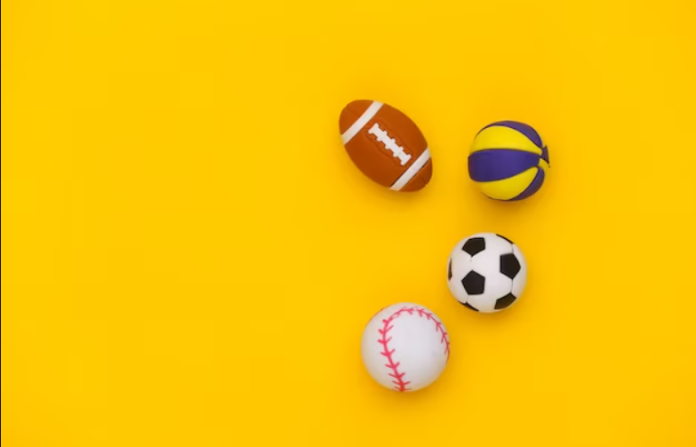The thrill of watching an expertly executed pitch whether it’s in football, baseball or cricket, can be nothing less than thrilling. Behind these incredible feats lies not only the skill of an athlete but also the complex study of the science behind the sports balls themselves. In this deep dive into the mysteries of their design, behaviour and the dynamic.
Today, in the age of technology the love of sports has also infused itself to the realm of betting on online platforms such as 22Bet login.
A Short Overview of Sports, and their importance
Participation in sports has been around as long as the civilization itself. From the ancient gladiatorial games to the current Premier League, our obsession with sports and competition has never diminished.
The bookmaker online has captured the hearts of millions thanks to its broad selection of betting options for diverse sports. As fascinating as the world of betting can be we must return to the primary attraction the balls of sports and their dynamism.
The Physics of the Perfect Ball
Understanding the behavior of the sports ball requires a deep dive into the physics of
Aerodynamics
- Dimples: Surface texture of golf balls help reduce drag and allow it to travel farther.
- Shape Oval shape on a ball can cause it to bounce unpredictable.
External Pressure and Material
- Elasticity: The tennis ball’s casing of rubber as well as its hollow interior provide it with its signature bounce.
- Pressure: Footballs, if under pressure, may behave in unexpected ways as witnessed in a few controversial games.
The Environment
Other external factors such as humidity, wind and altitude also significantly affect the direction and behaviour.
A Brief History of Balls and the Evolution of Ball Design
Through the years changes to design and layout have been made to improve the performance of the vehicle:
It is the Quest for Durability
From bladders of animals through synthetic substances, the search for durability has resulted in major changes in the ball’s construction.
adapting to the game’s requirements
Cricket balls have a distinct seam that assists players, while basketballs have an abrasive surface to provide greater grip.
A Comparative Analysis: Baseball vs. Cricket
While cricket and baseball balls may appear like each other, their unique design features can make a huge distinction. Baseballs are made for the speed of their players and also distance whereas the cricket ball’s design is geared towards both swing and spin.
Sporting with Technology
The advancements in technology have contributed to changing the performance of the balls used in sports:
- Sensor Technology: The balls infused with sensors offer real-time information aiding referees and improving viewing experience.
- Material Science: discovery of new materials may create the creation of balls with greater durability, stable or specifically designed to meet specific environment conditions.
The impact of Manufacturing Processes
It’s not just the shape and the materials of ball sports that have a significant impact on their dynamic and performance, but also the way they’re made:
The precision of Creation
- Uniformity: ensuring that every ball, regardless of whether it’s a soccer ball or a tennis ball is exactly the same in terms of weight, size and bounce is vital. minor variations can cause significant game disruptions.
- Quality Control: Modern technology and machinery are used to ensure that every ball is in compliance with the strict standards that are set by the governing bodies of sports.
The Function of hand stitching
In some sports, for instance cricket, the balls are hand-stitched to ensure a superior seam that assists players in creating motion in the air and off the field. The skill involved in the process is vital to the overall performance of the ball.
Cultural Variations and the Influence of
Balls for sports are not only in the hands of science and technology, but also by cultural influences:
Traditional Modifications
- Sepak Takraw: Originally from Southeast Asia, this sport makes use of a ball that is weaved rattan. It has distinct flight characteristics in comparison to balls made of synthetic materials.
- Pelota Mixteca: A traditional game played in Oaxaca, Mexico, which utilizes a leather ball, adorned by intricate patterns.
Local Preferences
In areas where specific sports are dominant the ball is often crafted to meet the requirements of the playing environment. For example, the cricket balls that are utilized in England differ from the ones that are used in Australia and Australia, which explains the differing conditions of the pitch and weather.
Conclusion
The nature of the sports ball that are governed by a complex designs and science are a major influence on the outcome of a game. From the stitching of leather to a baseball, to the dimples of the golf ball. All these small details that are often neglected, form the core of sport.
In the years ahead, technology and sports continue to interconnect Who can tell what the future holds? If you’re interested in deeper research into the science behind sports and technology, a Wikipedia page provides a wealth of information on the development and evolution of football.
FAQs
- What is it that makes dimples on the golf ball so important?
- Dimples to reduce drag, allowing the ball move further.
- What is the reason basketballs have a smooth surface?
- The texture increases grip, which allows players to manage the ball more effectively.
- What environmental factors affect the ball’s dynamics?
- The effects of humidity, wind and altitude can affect the ball’s direction and general behavior.









